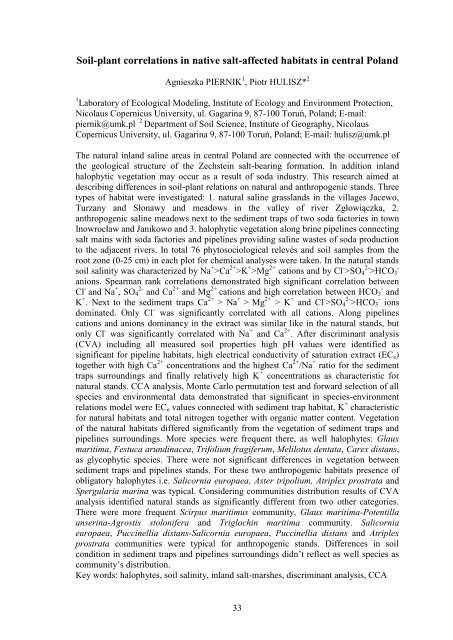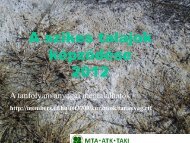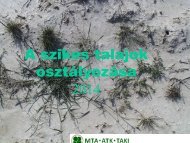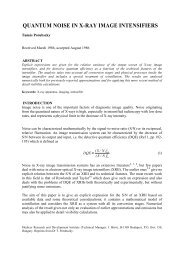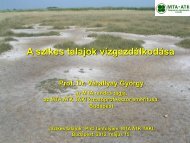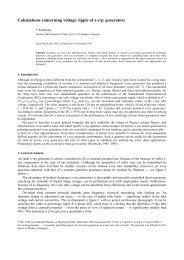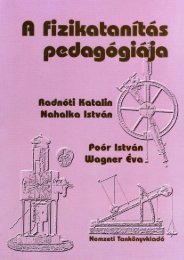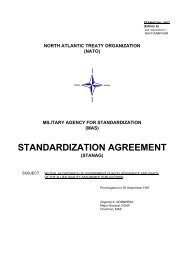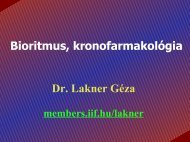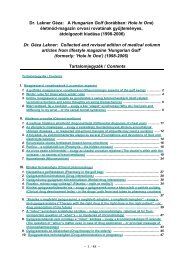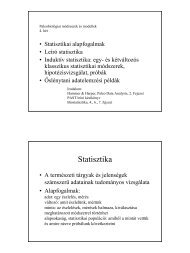Abstract form
Abstract form
Abstract form
You also want an ePaper? Increase the reach of your titles
YUMPU automatically turns print PDFs into web optimized ePapers that Google loves.
Soil-plant correlations in native salt-affected habitats in central Poland<br />
Agnieszka PIERNIK 1 , Piotr HULISZ* 2<br />
1 Laboratory of Ecological Modeling, Institute of Ecology and Environment Protection,<br />
Nicolaus Copernicus University, ul. Gagarina 9, 87-100 Toruń, Poland; E-mail:<br />
piernik@umk.pl 2 Department of Soil Science, Institute of Geography, Nicolaus<br />
Copernicus University, ul. Gagarina 9, 87-100 Toruń, Poland; E-mail: hulisz@umk.pl<br />
The natural inland saline areas in central Poland are connected with the occurrence of<br />
the geological structure of the Zechstein salt-bearing <strong>form</strong>ation. In addition inland<br />
halophytic vegetation may occur as a result of soda industry. This research aimed at<br />
describing differences in soil-plant relations on natural and anthropogenic stands. Three<br />
types of habitat were investigated: 1. natural saline grasslands in the villages Jacewo,<br />
Turzany and Słonawy and meadows in the valley of river Zgłowiączka, 2.<br />
anthropogenic saline meadows next to the sediment traps of two soda factories in town<br />
Inowrocław and Janikowo and 3. halophytic vegetation along brine pipelines connecting<br />
salt mains with soda factories and pipelines providing saline wastes of soda production<br />
to the adjacent rivers. In total 76 phytosociological relevés and soil samples from the<br />
root zone (0-25 cm) in each plot for chemical analyses were taken. In the natural stands<br />
soil salinity was characterized by Na + >Ca 2+ >K + >Mg 2+ cations and by Cl - >SO 2- -<br />
4 >HCO 3<br />
anions. Spearman rank correlations demonstrated high significant correlation between<br />
Cl - and Na + , SO 2- 4 and Ca 2+ and Mg 2+ cations and high correlation between HCO - 3 and<br />
K + . Next to the sediment traps Ca 2+ > Na + > Mg 2+ > K + and Cl - >SO 2- 4 >HCO - 3 ions<br />
dominated. Only Cl - was significantly correlated with all cations. Along pipelines<br />
cations and anions dominancy in the extract was similar like in the natural stands, but<br />
only Cl - was significantly correlated with Na + and Ca 2+ . After discriminant analysis<br />
(CVA) including all measured soil properties high pH values were identified as<br />
significant for pipeline habitats, high electrical conductivity of saturation extract (EC e )<br />
together with high Ca 2+ concentrations and the highest Ca 2+ /Na + ratio for the sediment<br />
traps surroundings and finally relatively high K + concentrations as characteristic for<br />
natural stands. CCA analysis, Monte Carlo permutation test and forward selection of all<br />
species and environmental data demonstrated that significant in species-environment<br />
relations model were EC e values connected with sediment trap habitat, K + characteristic<br />
for natural habitats and total nitrogen together with organic matter content. Vegetation<br />
of the natural habitats differed significantly from the vegetation of sediment traps and<br />
pipelines surroundings. More species were frequent there, as well halophytes: Glaux<br />
maritima, Festuca arundinacea, Trifolium fragiferum, Melilotus dentata, Carex distans,<br />
as glycophytic species. There were not significant differences in vegetation between<br />
sediment traps and pipelines stands. For these two anthropogenic habitats presence of<br />
obligatory halophytes i.e. Salicornia europaea, Aster tripolium, Atriplex prostrata and<br />
Spergularia marina was typical. Considering communities distribution results of CVA<br />
analysis identified natural stands as significantly different from two other categories.<br />
There were more frequent Scirpus maritimus community, Glaux maritima-Potentilla<br />
anserina-Agrostis stolonifera and Triglochin maritima community. Salicornia<br />
europaea, Puccinellia distans-Salicornia europaea, Puccinellia distans and Atriplex<br />
prostrata communities were typical for anthropogenic stands. Differences in soil<br />
condition in sediment traps and pipelines surroundings didn’t reflect as well species as<br />
community’s distribution.<br />
Key words: halophytes, soil salinity, inland salt-marshes, discriminant analysis, CCA<br />
33


